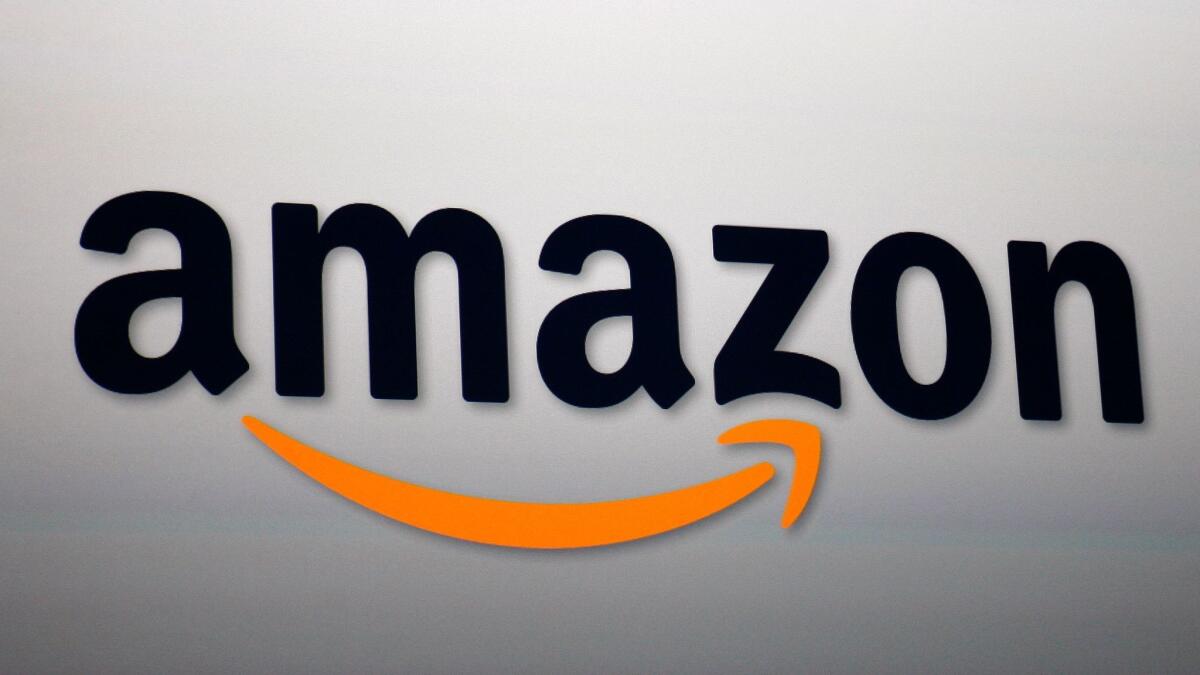Amazon is still inflating discounts despite new name, Consumer Watchdog says

- Share via
In a bid to promote its deals to consumers, Amazon.com Inc. started displaying current discounts compared to their historic price tags — a strategy that it calls the “was” price.
The “was” price was introduced as the e-commerce giant faced legal challenges and mounting criticism for allegedly exaggerating discounts through its previous pricing strategy, which was based on “list” prices derived from manufacturers, vendors and competitors.
For the record:
12:54 p.m. Jan. 23, 2025An earlier version of this post stated Consumer Watchdog filed its petition with California Atty. Gen. Xavier Becerra’s office and the Federal Trade Commission. It should have said the FTC and the Justice Department.
But a fresh study by Consumer Watchdog alleges that “was” prices, along with “before-sale” prices and “list” prices, continue to deceive consumers into thinking that they’re getting a bigger bargain than they actually are.
The Santa Monica-based nonprofit taxpayer and consumer advocacy group looked at hundreds of products sold by Amazon in June and found nearly 4 in 10 listings displayed fictitious discounts.
The report comes more than three months after Consumer Watchdog filed a petition calling on California Atty. Gen. Xavier Becerra to investigate Amazon after a separate study by the group alleged that the company was regularly using inflated “list” prices to give the appearance of larger savings.
On Thursday, Consumer Watchdog filed another petition calling on the Federal Trade Commission and the Justice Department to look into Amazon’s current pricing scheme.
“The new reference prices seem to be just as bogus,” said John M. Simpson, privacy project director for Consumer Watchdog, which is urging the FTC to consider the study when it reviews Amazon’s recent $13.7-billion bid for Whole Foods Market.
Amazon dismissed the study, describing it as misleading.
“We are obsessed with maintaining customer trust, and work hard to provide meaningful reference prices. We use a variety of systems to validate reference prices provided by manufacturers, vendors and sellers against actual prices recently found across Amazon and other retailers,” the company said in a prepared statement.
Amazon’s controversial “list” pricing has already sparked a class-action lawsuit, which is currently being heard at the U.S. 9th Circuit Court of Appeals in Pasadena. In January, the company was fined $750,000 by Canada’s Competition Bureau for misstating discount claims.
It’s not just Amazon that has gotten into trouble for inflating savings to consumers. Amazon rival Overstock was fined $6.8 million by a California judge in 2014 for misstating its discounts. In December, the Los Angeles city attorney’s office sued JC Penney, Sears, Kohl’s and Macy’s, accusing them of falsely advertising their sale prices.
In its latest study, Consumer Watchdog looked at 1,005 Amazon listings for common products like cameras and detergent and found 462, or 45%, had some form of reference price — an umbrella term for either a “list” price, “was” price, “before sale” price or a price crossed-out with a line, which the study refers to as a “strikethrough” price.
By comparison, Consumer Watchdog’s March report looked at 4,000 products and found that only 28% contained reference prices, suggesting that Amazon has been increasing its use of the advertising despite heightened criticism.
It’s unclear precisely how the different reference prices are determined and when and how they’re used.
“Amazon’s shifting approach to these prices suggests that the firm is seeking to reconcile increasing legal and public scrutiny with its continuing need to represent itself to consumers as a bargain retailer,” the study said. “The result is a shifting landscape that can prove hard for consumers and regulators to keep up with.”
To examine the recent reference prices, Consumer Watchdog used a price tracking site called Tracktor, which was able to determine the accuracy of Amazon’s reference prices within the last 901 days — more than enough time to encompass definitions of “recent past.”
Researchers found that 12 of 44 “was” prices and 83 of 99 “before sale” prices and 81 of the 182 “list” prices were greater than any price found on Tracktor. Meanwhile, none of 137 “strikethough” prices exceeded the maximum price found on Tracktor.
“This suggests that Amazon can accurately represent prior prices if it wishes,” the study’s authors wrote.
Consumer Watchdog said Amazon inflated its reference prices an average of 70% above to the highest price found for the listed products on Tracktor.
Among the examples cited in the study was a box of Hammermill printer paper advertised for $9.29 that displayed a “was” price of $17.78. Researchers found the paper was consistently sold for about $9 over the last year except for four periods of one or two days in which Amazon raised the price above $17.
In another example, a Seachunk messenger bag on sale for $22 displayed a “before sale” price of $149. Researchers said they could not find an instance in which the bag was sold for more than $26 in the last two-and-a-half years.
Follow me @dhpierson on Twitter
UPDATES:
11:15 p.m.: This article was updated to include a statement from Amazon.
This article was originally published at 4 p.m.
More to Read
Inside the business of entertainment
The Wide Shot brings you news, analysis and insights on everything from streaming wars to production — and what it all means for the future.
You may occasionally receive promotional content from the Los Angeles Times.











